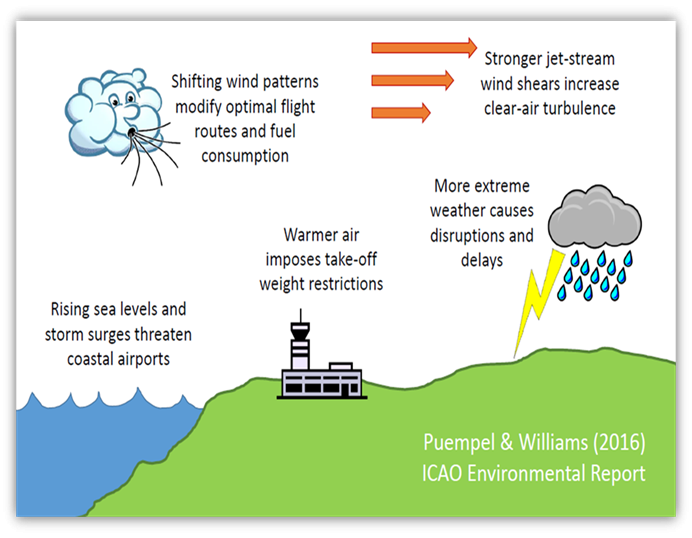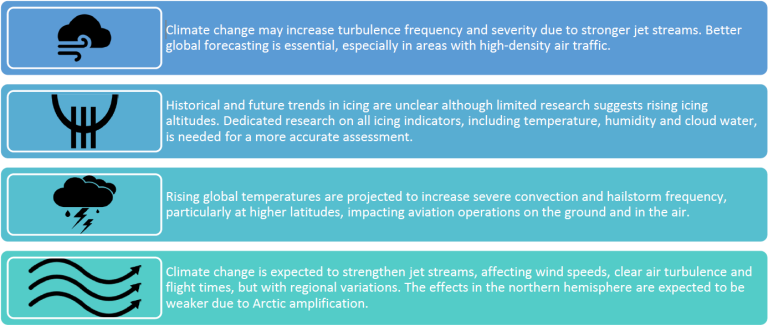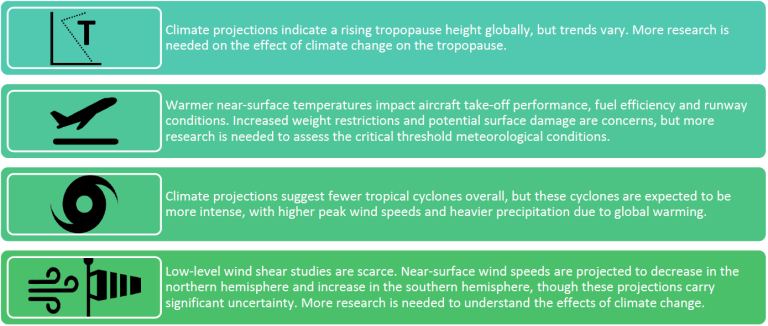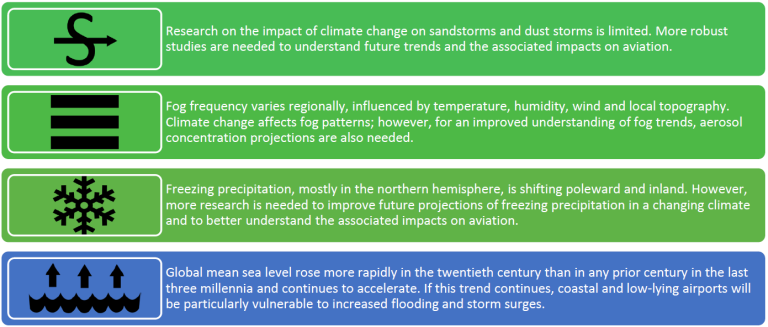Aviation - Climate Change and Variability
The aviation sector is pursuing efforts to reduce its environmental footprint, for example through the expanded use of low-carbon, sustainable aviation fuels, innovative power generation technologies such as electric and hydrogen, and optimized flight trajectories that can reduce flight time and fuel burn and reduce or prevent the formation of contrails/aviation-induced cirrus.
However, the other side of the story is equally noteworthy. It is important to recognize that climate change, often manifesting through more frequent, more intense weather events, sometimes in locations that are different to the ‘norm’, also has a profound impact on the aviation industry.

Increasingly frequent extreme weather events and hazardous conditions such as a tropical cyclones (known as hurricanes or typhoons in some parts of the world) can disrupt the operations of airports and air spaces locally but with wider knock-on ‘network effects’ regionally and sometimes globally.
With WMO’s support, and in collaboration with the International Civil Aviation Organization (ICAO) and other aviation industry partners, the aeronautical meteorology community is working towards strengthening its the support to aviation, for example by providing the best available scientific advice, potentially downscaled to the regional, national or local level (if or when possible), to help aviation’s efforts to adapt, mitigate, and build resilience, as a response to a changing climate.
In 2020, the Standing Committee on Services for Aviation (SC-AVI) conducted a global survey on the impacts of climate change and variability on aviation with an aim to clarifying the interest and concerns of aviation professionals around the world. The findings of this survey were published as by WMO as AeM SERIES No. 6.
In addition, to facilitate the aviation industry's adaptation to climate change, the Expert Team on Weather and Climate Science for Aviation Applications (ET-WCS), a subsidiary body of SC-AVI, has consolidated into a Compendium the findings of the latest assessments on impacts of climate change and variability on aviation e.g. changes in jet stream location and strength (with impacts on flight route efficiency), in turbulence location and intensity especially clear-air turbulence (with impacts on flight safety), in warming temperature (with impacts on airport and aircraft operations, including degraded take-off performance), and in the frequency and intensity of high impact weather events such as tropical cyclones. The Compendium incorporates recent research and publications. Additionally, a website has been created to provide access to a list of collected literature on related subjects.
The key messages that can be derived from these findings are as follows:



This Compendium is an integral part of this scientific advice provided by WMO to support ICAO and other aviation stakeholders to adapt to a hanging climate and mitigate its impact on aviation. The 2024 edition of the Compendium has been published by WMO as AeM-SERIES No. 9 and is available here.
CLICK HERE to return to our homepage
